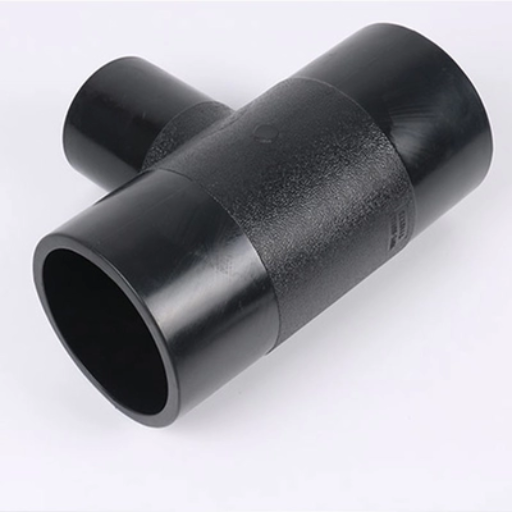High-density Polyethylene (HDPE) piping systems are a world of complexity. The Socket Fusion Reducing Tee forms an integral component that plays a significant role in fluid distribution, enabling the smooth changeover of different pipe diameters. This paper offers all-encompassing insights about HDPE-reducing tees by exploring their applications, advantages, and installation processes. At the end of this article, readers will understand how these versatile fittings can improve their piping system’s performance and why it is critical to choose proper components to achieve optimum outcomes.
What is a Socket Fusion Reducing Tee?
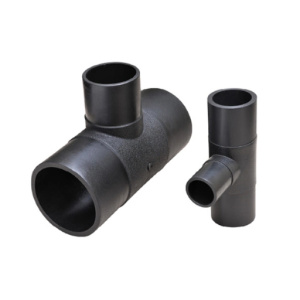
Image source: https://zttriunion.en.made-in-china.com/
A Socket Fusion Reducing Tee is one type of fitting employed in HDPE pipe systems that allows three pipes to be connected while changing the diameter of a pipe. It efficiently allows fluid flow from the main line into branch lines. The socket fusion method is where the ends of pipes and fittings are heated up to create strong thermally welded joints that have no leaks but maintain the integrity of the piping system. These tees are essential in many applications, such as irrigation, water supply, and industrial fluid handling, where different pipe sizes are needed.
Basic Description of a Reducing Tee
A Reducing Tee is a unique fitting found in HDPE piping systems that connects three different pipes of different sizes. Generally, the design has one inlet, which is more extensive, while two outlets have smaller diameters. These tees are usually made from high-density polyethylene material known for their strength and rusting resistance. They are perfect for various applications such as water distribution, plumbing, and industrial processes. They are easy to install through socket fusion, providing good connections that do not leak at all, which is essential in maintaining an effective overall piping system performance.
How Does Socket Fusion Work?
Socket fusion is widely used to join high-density polyethylene (HDPE) pipes and fittings. First off, pipe ends should be trimmed to their required lengths while also being cleaned before joining them with no contaminants present utilizing a socket fusion machine with a heating element and clamping mechanism. The heated surfaces should attain a prescribed temperature range (typically 400°F-500°F) whereby both the end sections of pipes and fittings begin melting. The heater is removed when sufficient heat has been achieved, allowing quick interconnection after the cooling period under pressure so that the molten parts get joined together fast but with solid bonds without leaks, thereby preserving system integrity. Socket fusion has been chosen due to simplicity, speed, durability of joints produced, etc., which makes it preferable for many HDPE applications.
Advantages of Using Socket Fusion Fittings
Socket fusion fittings have a lot of advantages that make them a choice for HDPE piping systems.
- Strong and Durable Connections: This process creates a socket on the pipe, which is then bonded with a fitting, resulting in joints that are as strong as the parent material and, hence, less prone to failure under stress.
- Leak-Free Joints: By melding surfaces, leakages can be minimized, and joints can be sealed tightly enough to withstand high pressure and other environmental factors.
- Quick Installation: The connection takes only a few minutes, and socket fusion only takes a few seconds. This short duration can significantly reduce installation time compared to alternative joining techniques.
- Corrosion Resistance: Since HDPE itself resists corrosion, even when exposed to harsh environments, socket fusion fittings do not degrade over time, thus extending the service life of such pipes.
- Lower Equipment Costs: Although minimal requirements, including heating elements or clamps, are needed for socket fusion, these tools are usually affordable and user-friendly, which means reduced total expenses related to set-up and maintenance costs.
For instance, water distribution, industrial processes, and the essentiality of durability make these advantages perfect for socket fusion fittings.
What are the Specifications of a Socket Fusion Reducing Tee?
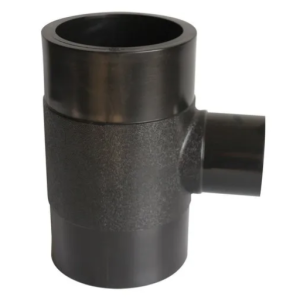
This socket fusion-reducing tee is mainly designed to join three HDPE pipe sections with different diameters. The necessary specifications are as follows:
- Material: It is built using high-density polyethylene (HDPE), which makes it resistant to corrosion, chemicals, and impacts.
- Pressure Rating: It is usually assigned pressure classes of up to 160 psi for use in various applications.
- Sizes: This type of fitting allows connections between smaller and larger pipes, normally between 1 inch and 8 inches in diameter. Many sizes are available.
- Temperature Resistance: These valves can handle heat up to approximately 140°F (60°C) without damage.
- Socket Depth: They are characterized by uniformity regarding depth that ensures correct fusion, resulting in secure joints.
These specifications help achieve piping systems’ operational requirements, providing a foundation of dependability and longevity.
Key Dimensions and Sizes
When looking at the dimensions and sizes for such tees, reference must be made to industry norms and manufacturer guidelines. Typically, these fittings come in different sizes ranging from one inch to eight inches across, thus accommodating various types of piping systems. The length of the socket fusion fittings usually adheres to standard dimensions during installation. Besides, the sockets must have an equal depth, generally around 1-2 inches, so that airtightness is ensured. Hence, no leakages occur during use. Proper sizing also contributes to attaining optimal flow rates under favorable pressures within particular applications. For accurate information on this topic, it is often helpful to consult product datasheets from reliable manufacturers since there may be slight variations depending on brand or material specifications.
Compatible Pipe Materials
Socket fusion-reducing tees typically combine well with various pipe materials. They include the following most commonly used materials:
- Polyvinyl Chloride (PVC): PVC is a lightweight, corrosion-resistant material widely used in plumbing and drain applications.
- Chlorinated Polyvinyl Chloride (CPVC): This material is similar to PVC but can withstand higher temperatures, making it ideal for use in hot water applications.
- Polyethylene (PE): Flexible and rigid, polyethylene is often used in gas and water distribution systems.
- Polypropylene (PP): It provides good resistance to chemicals and, therefore, finds application in many industries.
It’s important to ensure that the specific form of piping material used in your system matches up with the type of reducing tee you choose to optimize performance and durability.
Technical Specifications and Standards
When it comes to socket fusion reducing tees, there are numerous technical specifications as well as industry standards to consider when aiming at getting outstanding performance and safety. Key specifications include:
- Dimensional Standards: This entails ISO, ASTM, or ANSI recommendations on the dimensions needed for socket fusion fittings, thus ensuring a good fit into different piping systems.
- Pressure Ratings: The fittings must meet specific pressure levels as determined by the material chosen, ensuring they can handle the pressures within the system.
- Material Standards: To guarantee quality and reliability, each pipe material suitable for use with socket fusion fittings should conform to specific standards, e.g., ASTM D1784 for PVC or ASTM F441 for CPVC.
- Testing and Certification: All manufacturers will adhere strictly to various standards like NSF/ANSI 61, which control drinking water system components, hence enhancing their safety suitability, considering that even such waters may be potable.
Experts advise accessing resources from reputable manufacturers and industry standards organizations such as this one for up-to-date detailed specifications.
How do you install a socket Fusion reducing tee?
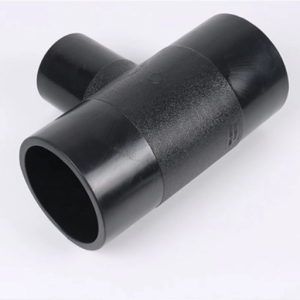
A socket fusion-reducing tee should be installed after careful preparation and execution to form a secure, leak-free joint. To install it correctly, follow these instructions.
- Materials Required: You must have the reducing tee, compatible pipes, a socket fusion machine, and safety equipment.
- Cutting the Pipes: Use the pipe cutter to cut the end of each pipe that will connect with the tee square and clean.
- Surface Cleaning: Clean any dirt, burrs, or dampness from the pipe ends using a cleaning solvent to enhance good fusion bonding.
- Preheating of Socket Fusion Tool: Set the manufacturer’s recommended temperature for specific pipe material on the socket fusion machine.
- Heating The Pipe And Tee: Plunge the end of each pipe into heated sockets on its tee. Do this till heating time is achieved as per guidelines with correct alignment ensured
- Assembling the Parts Together: After heating, quickly remove both pipes and tees from the tool and push the pipes fully into the sockets of the tees. Hold in place until the cooling time given by the maker passes.
- Checking the Joint: Look for watercourses or flaws when the joint is cooled. The perfect union leaves one soft, uniform finish.
This way, you can achieve long-lasting and efficient connections using a socket fusion-reducing tee.
Required Tools and Equipment
The following tools and equipment are necessary for the successful installation of a socket fusion-reducing tee:
- Socket Fusion Machine: This device warms up pipes’ ends and tee until a firm bond is formed between them.
- Pipe Cutter: It helps in cutting straight, clean edges on pipes so that they can fit well together,
- Cleaning Solvent: Before joining, make sure dust, oil, or moisture has been eliminated from surfaces by using an appropriate solvent cleaner for your piping system
- Safety Gear: During the installation process, personal protective equipment like safety glasses, gloves, and suitable clothing must be put on,
- Measuring Tools: These include measuring tape used for guiding accurate cuts as well as positioning components rightly to each other
These tools will significantly enhance the smooth and efficient installation of a socket fusion-reducing tee.
Step-by-Step Installation Guide
- Preparation: First, gather all the necessary tools and equipment listed in the Required Tools and Equipment section. Make sure your working area is tidy and well-lit.
- Measure and Cut: Use a tape measure to determine the correct lengths for the pipe sections. Employ a pipe cutter to carry out neat, straight cutting, eventually deburring the edges to prevent damage to the socket fusion joint.
- Clean Pipe Ends: Coat pipe ends with an appropriate cleaning solvent that can help remove impurities. This step is crucial in ensuring a strong bond during the fusion process.
- Heat Sockets: Adjust the socket fusion machine temperature according to the manufacturer’s recommendation. Place tee and pipe ends into warmed-up sockets and hold them until the specified warming time elapses.
- Join Pieces: The pipes should be quickly pulled from the heat source and placed in tee sockets. Make sure they are inserted completely inside and press them while you wait for the cooling period given by the manufacturer.
- Cool And Inspect: Give the connection enough time to cool completely before touching it. Examine the joint after cooling has taken place, making sure that a smooth uniformity indicates successful bonding.
- Test Joint: After cooling down the joint and examining it, it is time for a pressure test, which will confirm its reliability under operating conditions.
By following these steps, you can install a socket fusion-reducing tee, ensuring the lastingness and efficiency of connections made.
Safety Precautions During Installation
To ensure a safe installation process when working with socket fusion techniques, be mindful of the following precautions:
- Personal Protective Equipment (PPE): Always wear appropriate PPE, including safety goggles, gloves, and sleeves, to prevent burning or contact with chemicals.
- Ventilation: Such workspace must have adequate ventilation so that toxic gases discharged during heating/joining will not accumulate.
- Proper Tools Handling: Use tools and equipment according to the manufacturer’s instructions. Ensure all tools are in good condition and designed for the materials being worked on, as this will prevent accidents.
- Avoid Overheating: Carefully observe the heating process to prevent pipes and fittings from overheating, which can damage them and create hazardous situations.
- Fire Safety: Keep any flammable items away from your workplace, and make sure you have a fire extinguisher near you in case anything happens suddenly.
- Emergency Procedures: Should an incident occur at your place of work, make certain that emergency actions are readily available for first aid treatment.
By adhering to these safety measures, minimizing risks will be possible while also ensuring secure and efficient socket fusion installation.
What Applications Use HDPE Socket Fusion Reducing Tees?
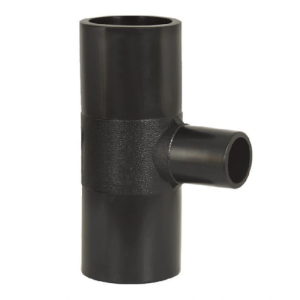
Due to their rugged nature and non-corroding ability, HDPE socket fusion reduces tees and finds wide application across many sectors. Some common uses include:
- Water Distribution Systems: These are used in municipal water supply networks to manage flow from larger to smaller pipes efficiently.
- Wastewater Management: Employed in sewage and drainage systems to facilitate the transition between different pipe sizes without compromising flow efficiency.
- Irrigation Systems: Ideal for agricultural and landscape irrigation, allowing customized water distribution in different zones.
- Chemical Handling: These are preferred for industrial processes where dangerous acids are shifted since they do not react with most acid types.
- Mining Operations: Slurry transport systems require strong connections that cannot fail; hence, this type of connection is utilized extensively here.
These applications highlight the versatility and effectiveness of HDPE socket fusion-reducing tees in various sectors.
Usage in Water Supply Systems
Water mains in various sizes fitted with HDPE socket fusion-reducing tees help manage the efficient water flow between pipes of different diameters. These fittings are commonly used in municipal water projects and make for easy connections that reduce pressure drops and improve overall system efficiency. They are famous for sustaining high pressures and harsh environmental conditions, making them ideal for use both above and underground. Additionally, HDPE is corrosion resistant and does not react with chemicals, ensuring that it lasts long, lowering the costs of maintaining the network and extending its lifespan. All this is a significant component in enabling modern water supply systems’ reliability and effectiveness.
Applications in Gas Supply
HDPE socket fusion-reducing tees have become increasingly preferred in gas distribution systems because they are durable and efficient. Such fittings enable firm joints amid varying pipe sizes, thus guaranteeing smooth gas transmission even as they minimize leakages or pressure losses during flow. The application of HDPE in gas distribution has become popular due to its resistance to impact and environmental stress, which makes it suitable for residential applications, too. Moreover, corrosion is prevented by HDPE from occurring under such circumstances; hence, it remains reliable over many years, even when exposed to callous conditions like those experienced within gas networks. HDPE socket fusion significantly reduces tees and enhances safety while facilitating more effective gas supply networks, which aligns with industry performance standards.
Other Industrial Uses
HDPE fused socket-reducing tees are for water and gas supply systems and various industries. They can be used in waste management systems because they are strong enough to resist chemicals, providing reliable connections in wastewater treatment plants. In agriculture, these connectors enable efficient water supply and distribution through irrigation systems to enhance water use efficiency in crop production. Furthermore, their lightness and ease of installation have made them a preferred choice when joining diverse building piping networks. Therefore, HDPE is integral to numerous industrial sectors due to its flexibility and durability.
Reference sources
-
HDPE Socket Fusion Reducing Tee Fittings – HDPE Supply
This source provides a comprehensive overview of HDPE socket fusion reducing tee fittings, detailing their specifications, applications, and the fusion process. It includes technical explanations and practical guidelines for using these fittings in various piping systems.
Read more -
HDPE Socket Fusion Reducing Tee Fittings – ISCO Industries
ISCO Industries’ page includes information on the production standards, testing procedures, and quality assurance for HDPE socket fusion-reducing tee fittings. The content explores the benefits and applications of these fittings in different industries, providing a thorough guide.
Read more -
HDPE Socket Fusion Reducing Tee Fittings – SUNPLAST
SUNPLAST offers detailed information on HDPE socket fusion reducing tee fittings, highlighting their features, benefits, and uses. The site also covers the manufacturing process and the quality standards adhered to during production.
Read more
Related Articles: Specifications for Socket Fusion Reducing Tee



